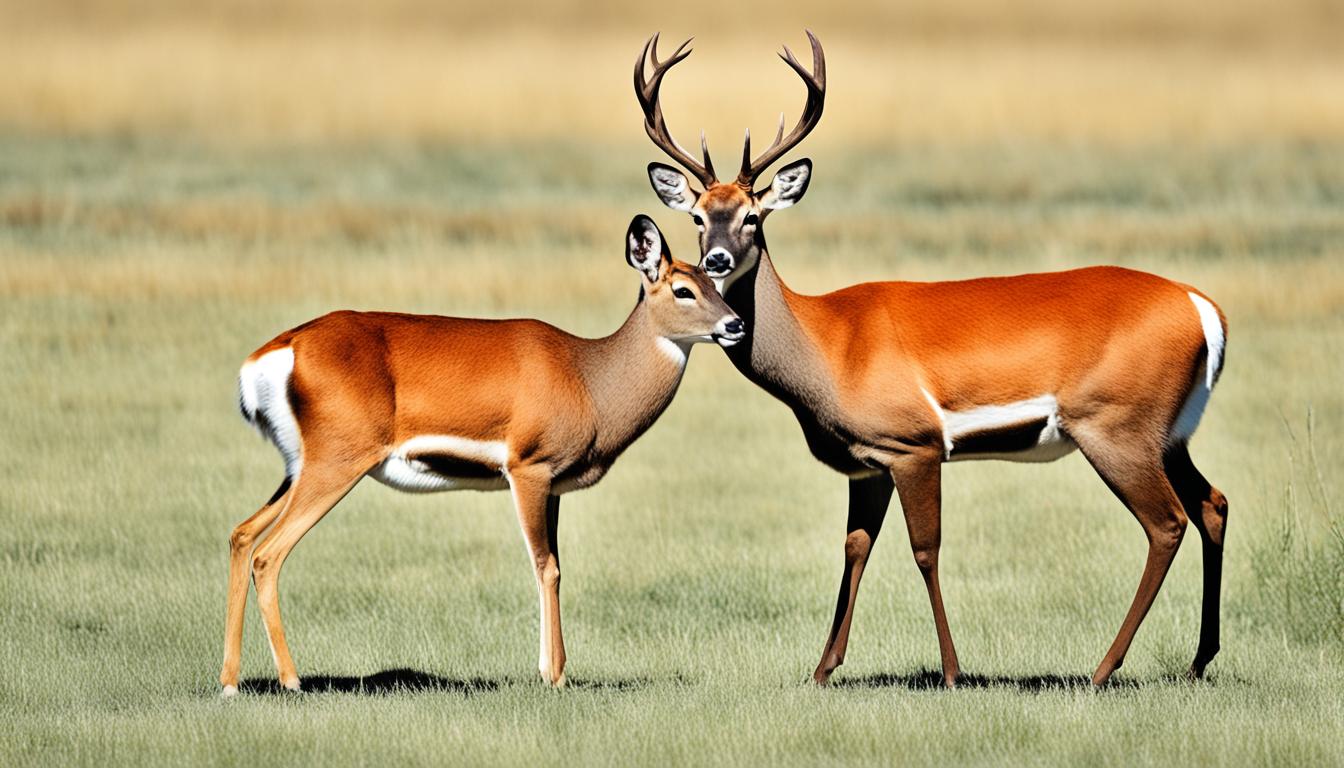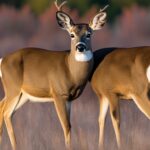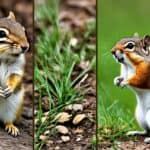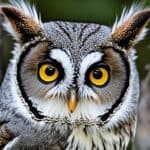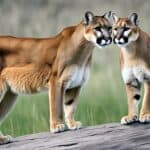Ever been out in nature and wondered if you’re seeing a deer or an antelope from afar? Both are similar but have distinct features. These differences are important for those interested in wildlife and conservation.
Deer are found mainly in the North while antelopes roam Africa and Eurasia. The location is key in telling them apart. What should one look for to find out what they’re seeing?
Let’s talk about their looks and what they eat to tell them apart. These tips will help you learn about these amazing animals. You’ll better know and love them after.
Introduction to Deer and Antelope
Deer and antelope are amazing animals known for their elegance and beauty. They are key parts of various ecosystems. Understanding their uniqueness is vital for efforts in conservation and enjoying wildlife. Although both eat plants, they are from different groups and have special features for their living spaces.
Knowing how to tell deer and antelope apart is key. Deer, part of the Cervidae family, dominate the Northern Hemisphere. On the other hand, antelopes, in the Bovidae group, are found in Africa and some of Eurasia. Recognizing these facts makes it easier to identify them.
For those who love wildlife, recognizing the deer or antelope distinguishing characteristics is important. Both have special features that help them thrive where they live. This understanding is exciting and important for anyone involved in protecting or enjoying nature.
Taxonomic Differences: Deer vs Antelope
It’s important to understand the taxonomic differences between deer and antelope. Both are in the same Artiodactyla order. However, they differ at the family level.
Deer: Family Cervidae
Deer are in the Cervidae family. This family includes muntjac, elk, and moose. They are known for shedding and regrowing their antlers each year. Their ability to chew cud is unique and helps compare deer and antelope traits. Key elements in comparison are their antlers and digestive systems.
Antelope: Family Bovidae
Antelope, on the other hand, fall under the Bovidae family. This family includes sheep, goats, and cattle. Unlike deer, antelopes have horns that they keep their whole life. These horns are seen in both male and female antelopes. This difference in headgear is a major way to tell deer and antelope apart.
Both families belong to the ungulates group known for their cud-chewing stomachs. But each has its own unique taxonomy.
Here’s a table detailing some of the primary differences:
| Trait | Deer (Cervidae) | Antelope (Bovidae) |
|---|---|---|
| Headgear | Antlers (shed annually) | Horns (permanent) |
| Family | Cervidae | Bovidae |
| Examples | Muntjac, Elk, Moose | Various species of antelopes, Sheep, Goats |
| Distribution | Primarily Northern Hemisphere | Africa, Eurasia |
Physical Traits: Horns vs Antlers
It’s key to know the physical traits of deer and antelope to spot them in the wild. Their main difference is what’s on their heads. Let’s dive into the distinctive features of deer antlers and antelope horns.
Antlers in Deer
Male deer are famous for their big, branched antlers. These deer antlers are made of bone and grow back each year. This annual regrowth happens in their mating season, making it easy to tell them apart from antelope.
Horns in Antelope
Antelopes, on the other hand, have antelope horns. These horns are always there, growing from a bony core. Male and female antelopes both have horns, which can look very different. The never-ending growth of horns is a sharp contrast to deer antlers’ annual cycle.
| Feature | Deer Antlers | Antelope Horns |
|---|---|---|
| Composition | Bone | Bony core with keratin |
| Shed Annually | Yes | No |
| Sex Presence | Primarily Males | Both Sexes |
| Growth Pattern | Annual Regrowth | Continuous Growth |
Knowing these traits can help you tell deer and antelope apart. This knowledge is great for spotting them in the wild and enjoying nature more.
Geographic Distribution and Habitat
Knowing where deer and antelope live tells us a lot about them. It shows how they fit into the world and what they need to survive. Different species need different kinds of homes.
Deer Habitat
Deer live in many places such as forests, fields, and cold tundras. They are on every continent except for Antarctica and Australia. Their wide range of climates shows how they can live in varied places.
Antelope Habitat
Antelopes prefer Africa and Eurasia. They do well in places like grasslands and dry deserts. The different habitats of deer and antelope highlight their special abilities to live across the globe.
Diet and Feeding Habits
The diets of deer and antelopes are very interesting. It shows how they have adapted differently to life in various places. Both types of animals have specially designed stomachs for eating plants. But, they eat different things.
Deer like to eat nuts, fruits, and the bark of trees. These foods are found everywhere in their homes, from the dense forests to the open fields. Eating such a wide range of food helps them stay healthy and makes their living areas lush.
On the other hand, antelopes mainly eat grass and sometimes bushes. This is ideal for the wide open spaces like savannas where they live. Eating grass is key for keeping their environment healthy and thriving.
| Aspect | Deer | Antelope |
|---|---|---|
| Diet Variety | Nuts, Fruits, Bark | Grass, Shrubs |
| Primary Habitat | Forests, Grasslands | Savannas, Plains |
| Role in Ecosystem | Promotes Vegetation Diversity | Maintains Grassland Health |
Learning about what deer and antelopes eat helps us see their part in nature. The specific foods they choose show their place in the environment. It also shows how they help keep the balance of life.
Speed and Movement Patterns
Understanding how deer and antelope move can really help us tell them apart. Antelope speed is truly impressive. They can sprint at speeds up to 50 miles per hour, and keep going for a long time. This speed helps antelopes run away from danger and cross vast open areas and deserts easily.
Deer, on the other hand, have their own way of moving. They can’t keep up with antelopes over long distances. However, they can run very quickly, reaching 35 miles per hour. Deer movement patterns show up when they are trying to get away from something dangerous in the woods or rough places.
| Characteristic | Antelope | Deer |
|---|---|---|
| Maximum Speed | 50 mph | 35 mph |
| Primary Movement | Long-distance running | Short, rapid bursts |
| Typical Habitats | Plains, deserts | Forests, rugged terrains |
Distinguishing between deer and antelope by their speed and movement is key. These differences tell us about their past and how they survive today in their homes.
Social Behavior and Group Dynamics
Deer and antelope have interesting ways of interacting. They show us how animals come together and live in their own worlds.
Deer and antelope act in different ways. Deer often form small groups. These groups help them find food and stay safe. Male deer may have groups of females they mate with, while the mothers raise their young away from the males.
On the other hand, antelopes have complex group lives. They live in big, organized herds with clear leaders. This helps them with finding mates and stays protected. Female antelopes stay in these groups, keeping their families together.
“Deer and antelopes may appear similar, but their social behaviors and group dynamics set them apart in unique ways,” – Wildlife Researcher.
Studying this lets us know more about them. It shows how deer and antelope fit into their home in nature. Their choices affect how they live and work with their surroundings. It’s important for us to see the big picture.
| Aspect | Deer | Antelope |
|---|---|---|
| Group Size | Small to medium | Large herds |
| Leadership | Seasonal male dominance | Dominant male hierarchy |
| Fawn Rearing | Independent by females | Within large female groups |
Understanding deer and antelope’s social lives makes wildlife watching more rewarding. It also helps us protect them better. Knowing about their behaviors tells us how they fit into their environment. And how we can help them stay there.
Reproduction and Lifecycle
Deer and antelope differ in their reproductive behavior due to evolutionary changes. Studying these behaviors reveals interesting facts. This knowledge can help identify these animals better in the wild.
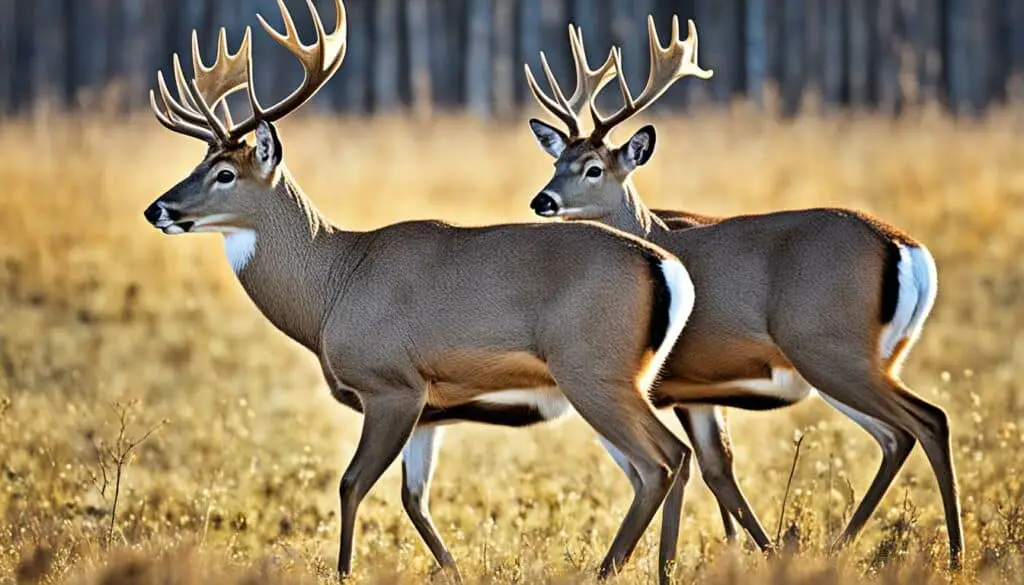
Breeding Season and Offspring in Deer
Deer mate in the fall, called the rut. Male deer fight and show off to win over females. Does, the female deer, give birth to fawns six to eight months later. These babies are kept safe and out of sight from predators.
Breeding Patterns in Antelope
The breeding habits of antelope vary by type and location. They often mate in the rainy season to ensure there is plenty of food for their young. Female antelopes have one calf after six to nine months of pregnancy.
This is specifically to help youngsters grow strong. Antelopes also move around to find enough food and water. This is vital for the life of their offspring.
Conservation Status and Threats
The deer conservation status needs immediate attention. Human actions, like destroying habitats, are a big problem. This leads to fewer deer in the wild because cities grow and forests disappear.
Antelopes face even greater danger in some places. Poaching is a big threat to them. The demand for antelope parts like horns and hides makes saving them very challenging. We must work hard to stop these harmful activities through education and protection.
The RER project in Indonesia seeks to help deer and antelopes. It aims to restore their homes and fight the effects of climate change. Projects like this are important for their long-term survival.
| Issues | Consequences |
|---|---|
| Habitat Loss | Reduction in habitat size and quality leads to fragmented populations. |
| Poaching | Decreases in population due to illegal hunting for horns and meat. |
| Climate Change | Alters natural habitats, affecting food availability and breeding cycles. |
Understanding the deer conservation status and the issues antelopes face is key. This knowledge helps us support ways to protect these animals. With our help, they can thrive for years to come.
Markings and Coloration
Spotting deer or antelope in the wild depends a lot on their unique looks. Deer have various markings. For example, white-tailed deer stand out with their white belly and tail. Deer also might have spots or stripes for hiding or talking with others.
Antelope are just as interesting with their colors. The oryx antelope, for instance, has eye-catching white and dark patterns. These patterns help it hide in dry places. But they also show off for mates and mark their territory.
| Characteristic | Deer | Antelope |
|---|---|---|
| Coloration | Varied: brown, tan, white spots | Varied: tan, brown, white streaks |
| Markings | Spots, stripes, white underbelly | Distinct streaks, dark facial markings |
| Camouflage | Forest and woodland patterns | Plains and desert patterns |
Seeing these markings makes spotting deer or antelope more fun. It not only helps us tell them apart but also connects us more to these amazing animals.
How do you distinguish between a deer and an antelope?
Deer and antelope identification can be tricky but interesting. To tell them apart, look at their headgear, bodies, where they live, what they eat, behave, and their markings. This way, you’ll see the deer vs antelope differences clearly.
First off, let’s talk about headgear. Deer grow antlers that fall off and grow back every year. On the other hand, antelopes have horns that stay with them. Spotting who’s who can be as easy as looking at their heads.
Next, check out their size and shape. Deer often have bulkier bodies compared to the sleek shapes of antelope. Their different builds help them survive in their environments.
Where they live is crucial too. Deer like forests and fields up north, while antelope roam the open grasslands of Africa and parts of Eurasia.
The table below highlights some key differences:
| Feature | Deer | Antelope |
|---|---|---|
| Headgear | Antlers (shed annually) | Horns (permanent) |
| Body Structure | Larger and more rotund | Streamlined and agile |
| Diet | Nuts, fruits, bark | Grass, occasional shrubs |
| Habitat | Forests, fields (Northern Hemisphere) | Plains, savannas (Africa, Eurasia) |
Finally, notice how they act and their looks. Deer are often alone or in small groups. Meanwhile, antelopes prefer the company of others, gathering in big herds.
Knowing these hints makes telling deer from antelope fun and easy, even in the wild.
Additional Resources for Wildlife Identification
If you want to learn more about deer and antelope, there are great resources out there. Websites like the National Wildlife Federation and the Smithsonian National Zoo offer a lot of info. They have articles, photos, and videos that can help you tell these animals apart. Also, you can check “Mammals of North America” by Peterson for comparisons between deer and antelope. It offers pictures and detailed info.
Field guides are key for wildlife enthusiasts. They have specific sections on telling deer and antelope apart. These guides include photos, drawings, and text to help you see the differences. You’ll learn about things like the types of horns they have and their colors.
Groups working on conservation, like Restorasi Ekosistem Riau (RER), also share helpful info. They publish reports on protecting these animals and their homes. Getting involved with these efforts can teach you a lot about wildlife. It also shows you how important these species are to their ecosystems. Using these materials can help you get better at recognizing deer and antelope. And, you’ll be joining the fight to save wildlife.
FAQ
How do you distinguish between a deer and an antelope?
Deer have antlers, which they shed and grow back each year. Antelopes have horns that stay on all the time. Look at their homes, how they act, and how they look to tell them apart.
What are the taxonomic families of deer and antelope?
Deer are in the Cervidae family, which also includes elk and moose. Antelope are in the Bovidae family. This family has sheep and cattle too.
How do antlers in deer differ from horns in antelope?
Antlers in deer are shed and regrow yearly, mostly in males. Antelope have permanent horns. These horns can be found on both males and females, and they come in many shapes and sizes.
Where can deer be commonly found in terms of geographic distribution?
Deer live in the forests, grasslands, and tundra of the Northern Hemisphere. They are found on every continent in the north except Antarctica and Australia.
What types of habitats are antelopes typically adapted to?
Antelopes mostly live in Africa and Eurasia. They can be found in places like grassy plains and deserts.
What are the dietary preferences of deer and antelope?
Deer like to eat nuts, fruits, and bark. Antelopes mainly eat grass, and sometimes shrubs. They eat foods that are in their natural living areas.
How do the speeds and movement patterns of deer and antelope compare?
Antelopes are very fast and can run up to 50 miles per hour. They can keep running for long distances. Deer are also quick, reaching up to 35 miles per hour. They use their speed to get away from danger and move in their lands.
How do the social behaviors and group dynamics of deer and antelope differ?
Deer and antelope have their own ways of getting along and organizing themselves in groups. Understanding these patterns helps us know how they fit into their environments.
What are the breeding patterns and lifecycle differences between deer and antelope?
Deer and antelope have different times for having babies, how long they carry them, and how they take care of the young. This shows how they’ve evolved to live in their worlds differently.
What are some conservation threats faced by deer and antelope?
These animals are threatened by losing their homes, illegal hunting, and the changing climate. People are working to save them by focusing on safe ways of living and protecting where they live.
What markings and coloration patterns are unique to deer and antelope?
Deer can have many different coat colors and patterns. Antelopes may have white markings that help them hide, find a mate, and interact with others.
What resources can help in distinguishing between deer and antelope?
To learn more about telling them apart, check out field guides, websites, and conservation projects like Restorasi Ekosistem Riau (RER). These are great for anyone who loves wildlife and wants to get better at telling animals apart.

